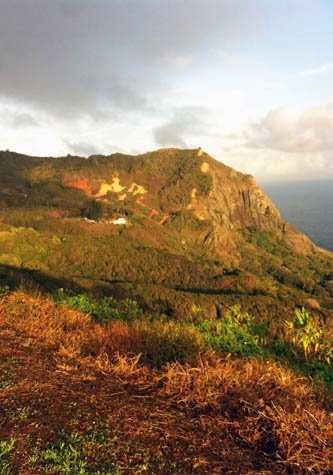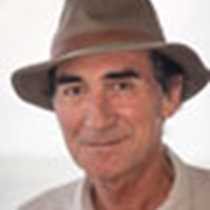«Nous avons fait l'histoire d'une croyance. Elle s'établit: la société humaine se constitue. Elle se modifie: la société traverse une série de révolutions. Elle disparaît: la société change de face.»
— Fustel De Coulanges, La Cité Antique, 1864
Last evening, the National Geographic Orion dropped anchor in Bounty Bay and we boarded Zodiacs to explore the coast for our first close-up view of one of the most isolated, yet inhabited islands in the world. Residents today range from 30 to 50, and they explained to us the urgent need to attract more people to widen the possibilities of preserving the settlement that was founded by the Bounty mutineers in the late 18th century.
Early in the morning, with nice weather and a relatively calm sea, we landed and divided in several groups to begin our exploration of this extraordinarily attractive little island.
Walks ranged to different points on the island—to Christian’s Cave near the summit of the main mountain, to the Eco trail, to Saint Paul’s Pool. Others explored the island’s square and administrative centre and from there visited some of the emblematic sites along a neat path that took us to see some of the relics of the Bounty. Among them, the graveyard was a very interesting place reflecting the complex history and society, and a testimony to sometimes unusual life stories.
We visited the old mill where every year, during the local “winter” the inhabitants bring the sugar cane harvest and process it for distribution, mostly to preserve an historical community custom initiated by their ancestors. Our exploration took us then to the grave of the last mutineer and patriarch of Pitcairn, John Adams, one of the landmarks of Pitcairn. We were accompanied by Nola, a lifelong Pitcairn resident, who gave us insights beyond what is recorded in the existing and abundant written reports. She took us to her house were we shared other tales and learned about their ways of life. As we walked from Nola’s house, we observed many native flora as well as several of the plants introduced by Polynesians who settled Pitcairn approximately 1000 years before the arrival of the Bounty.
We had great views from the highest points, drove on the only transportation means available—the ubiquitous ATV’s—to more distant locations like Ted Side, and heard stories about former Polynesian settlement of that area. We observed the faint remains of villages and ceremonial sites (marae) possibly connecting Pitcairn with Easter Island (over 2,000 kilometres to the SE). Back to the square at the heart of the village, we stopped at Meralda’s home and found her sitting on a low wall in her front garden and next to the precious bell of the Bounty.
Many of us took other trails that allowed us to observe some of the unique local birds or simply sit in a fallen tree or boulder and enjoy the gentle sound of the landscape charged with the reminiscences of a rich and sometimes tragic past.
As we slowly descended towards Bounty Bay we wished we had more time to share and learn more about their unique history. We boarded our Zodiacs and on the way back to our ship, our faces expressed a mix of melancholy and hope. We wish them the best and we hope to come back.



.jpg?width=106&height=85&mode=crop&scale=both&quality=50)



